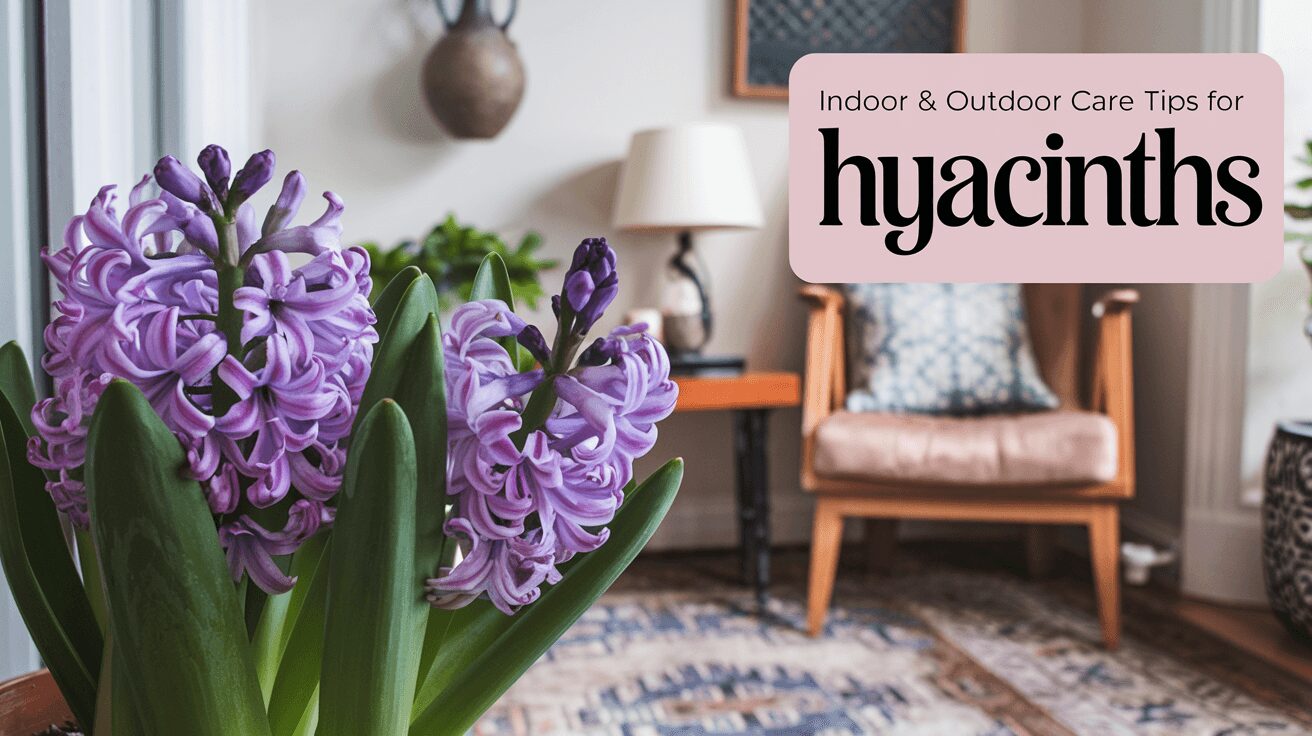Hi there, welcome to the world of hyacinth care. Ever had a hyacinth that looked stunning in the store, only to wilt and fade once you brought it home? Yeah, I’ve been there, too.
Hyacinth care isn’t rocket science, but I’ve definitely learned a few tricks (the hard way) to keep them happy and blooming year after year.
From my own trial and error—and a few near-plant-deaths—I’m going to walk you through how to care for your hyacinths so they’ll thrive indoors, outdoors, in pots, or even in water. It’s easy, trust me!
Hyacinths are those beautiful, fragrant flowers that seem to pop up everywhere in spring. But if you don’t know how to care for them, they might not look as good as they could—and, well, no one wants a sad hyacinth.
Let’s dive in and get your hyacinths looking fabulous, no matter where you're growing them!
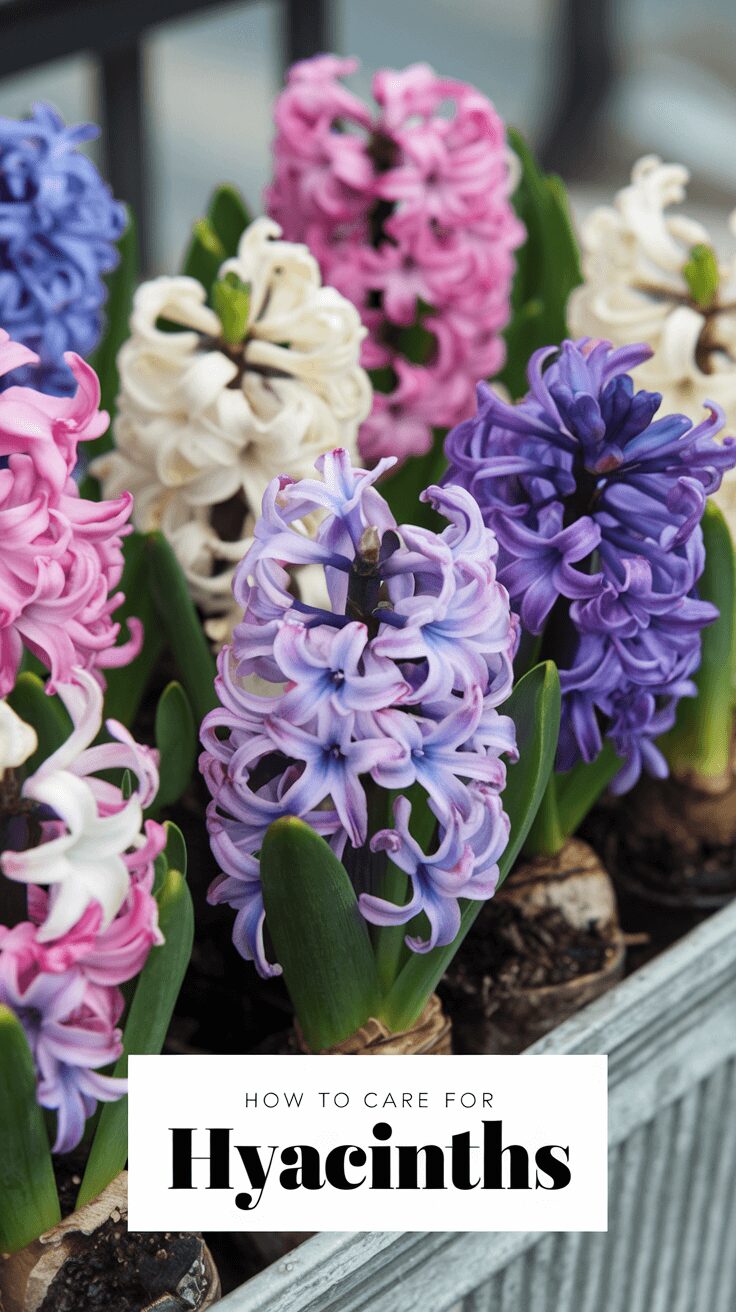
About Hyacinth
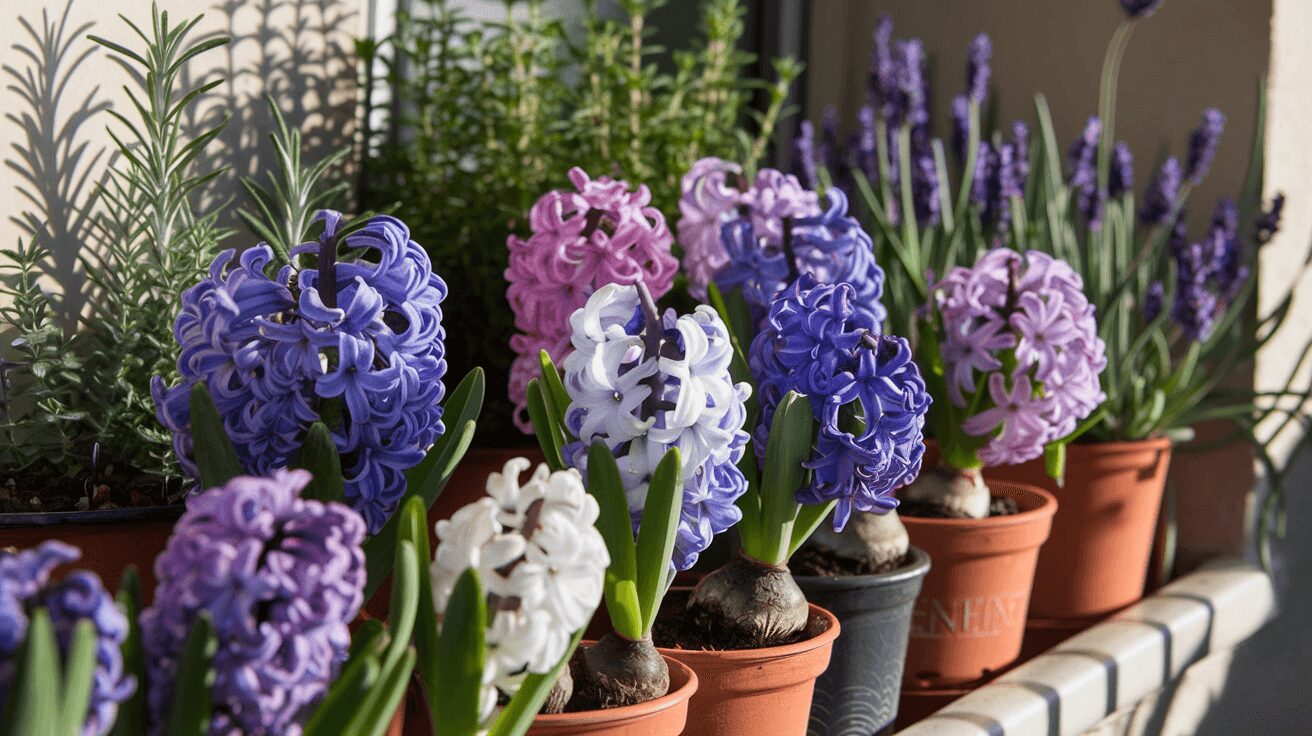
So, what’s the deal with hyacinths? These plants are super popular for a reason. Not only do they smell like heaven, but their colorful, clustered blooms can brighten up any space. The best part? They’re fairly easy to grow, which makes them perfect for both gardening newbies and pros alike.
Hyacinths come from the eastern Mediterranean and have been cultivated for centuries. They’re spring bloomers, and you’ll often see them in gardens or as part of indoor arrangements.
And get this—there are over 60 varieties of hyacinths! I had no idea there were so many until I started digging into their care. Pretty cool, right?
- Fun Fact: In Victorian times, hyacinths were a popular symbol of constancy and sincerity, often given as gifts to express enduring love.
Hyacinth Plant Information
- Botanical Name: Hyacinthus orientalis
- Family: Asparagaceae
- Plant Type: Perennial bulb
- Sun Exposure: Full sun to partial shade
- Soil Type: Well-draining, rich soil
- Soil pH: Neutral to slightly acidic (6.0-7.0)
- Bloom Time: Early to mid-spring
- Flower Color: Blue, pink, purple, white, red, yellow
- Hardiness Zones: 3–9
- Water Needs: Moderate (keep soil moist but not waterlogged)
- Height: 6-12 inches
- Spread: 4-9 inches
- Sowing: Plant bulbs in fall, 4-6 inches deep
- Native Area: Eastern Mediterranean, Middle East
Related:
Hyacinth Plant Indoor Benefits
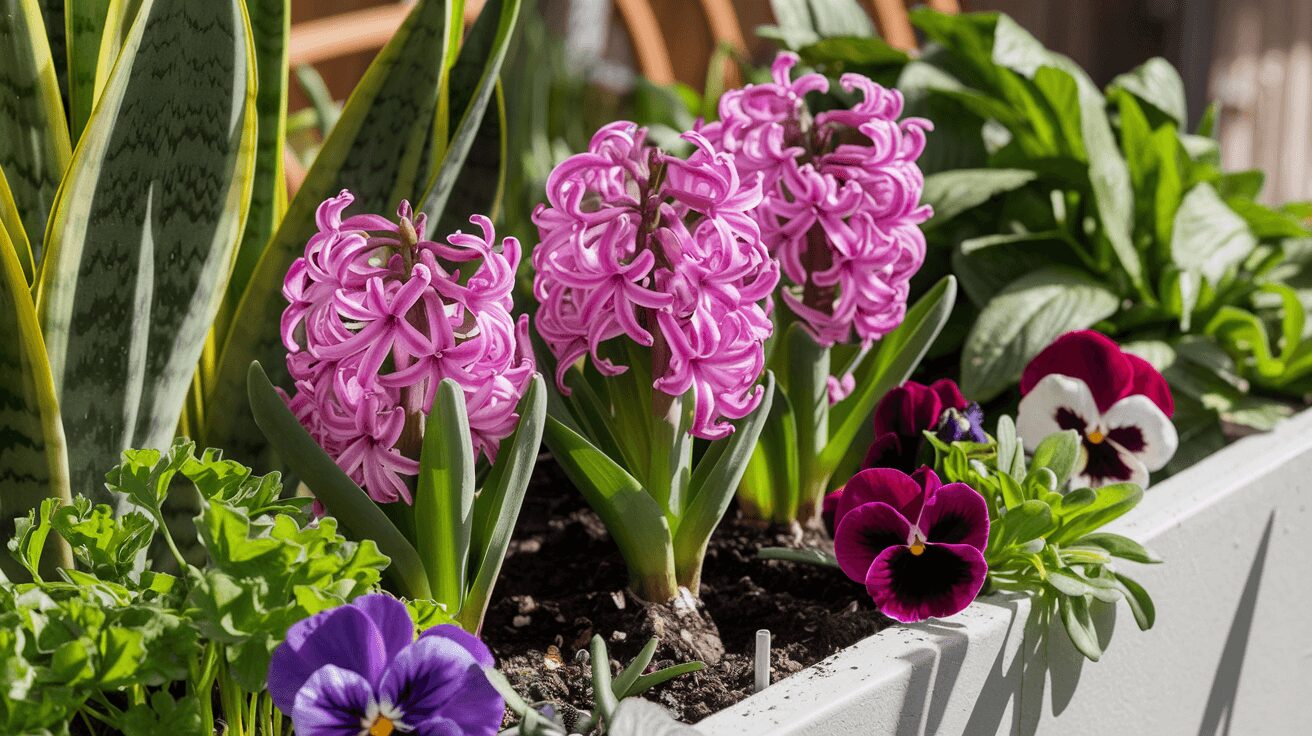
Growing hyacinths indoors is one of the best decisions I ever made for my space (and my mood). Here’s why: These plants not only add a pop of color, but their scent is so refreshing. If you’ve ever had a stressful day, having a blooming hyacinth in the room can be a game-changer. They’re like a breath of spring in the middle of winter.
Also, they’re perfect for small spaces. If you’re like me and live in an apartment with limited garden space, hyacinths can easily grow in pots or even just a jar of water. They don’t demand much, but they definitely give back a lot.
Types of Hyacinth
When I first got into gardening, I had no clue that hyacinths came in so many varieties. There's the classic purple-blue variety, but you can also find them in white, pink, yellow, and even a deep maroon. I personally love the pink ones—they look super vibrant against green leaves.
A few common types you might encounter:
- Delft Blue – This one’s the OG hyacinth in that deep blue shade.
- Woodstock – For a more intense, reddish-purple vibe.
- Pink Pearl – Soft and delicate pink blooms that brighten any room.
- Carnegie – If you’re more into crisp whites, this one’s for you.
How to Care for Hyacinth
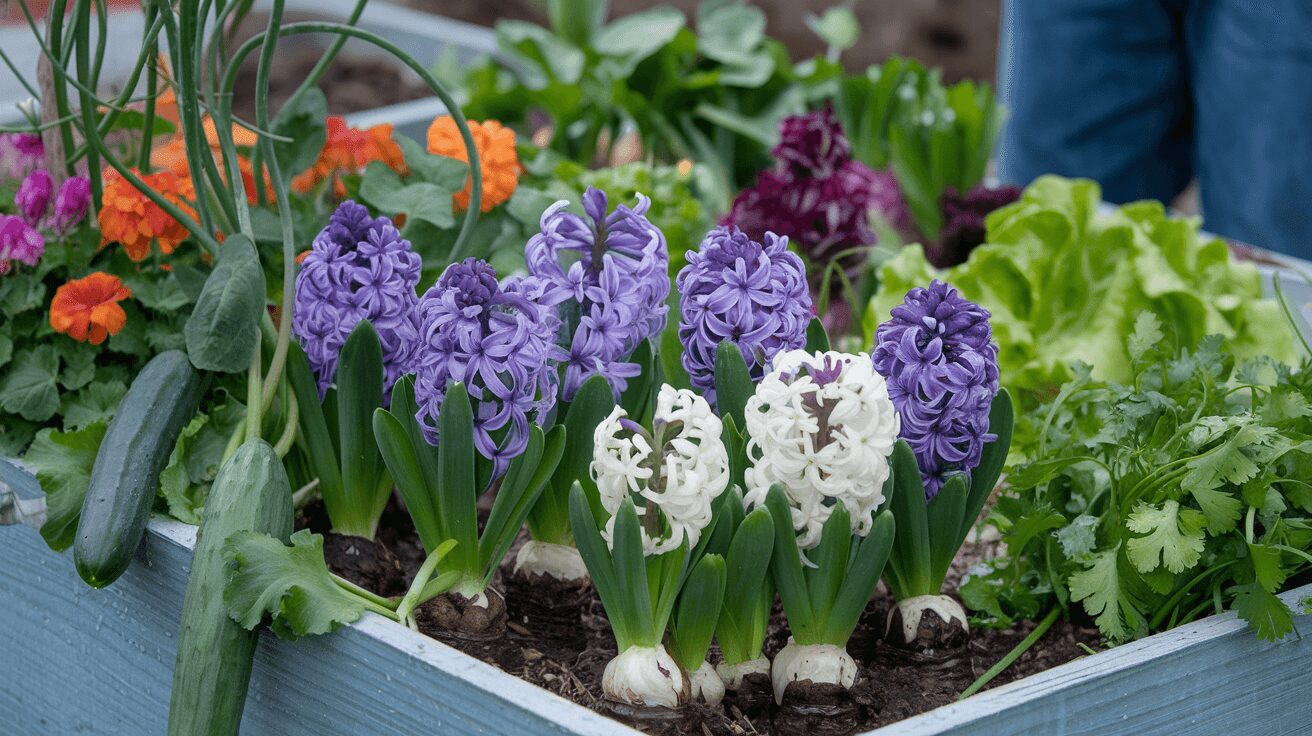
Caring for hyacinths doesn’t have to be a headache, but it can get tricky if you don’t know what you’re doing. I’ve had my fair share of hyacinth mishaps, but the key to keeping these beauties happy is consistency.
1. Light
Hyacinths love the sun. Ideally, give them around 6 hours of sunlight each day, whether indoors or out. Outdoors, plant them in a spot that gets full sun or partial shade. Indoors, place your hyacinth pots in the brightest window you have.
Without enough light, the flowers won’t bloom as vibrantly, and the stems might get leggy and floppy. No one wants a floppy hyacinth!
2. Watering
Watering is where I used to mess up a lot. Hyacinths like moist soil, but they hate being waterlogged. Overwatering can easily lead to bulb rot, which is probably the most frustrating thing to deal with.
Here’s what works for me: water when the top inch of soil feels dry. In the garden, rain might be enough, but in dry spells, give them a drink.
When watering, make sure to avoid getting the bulb itself wet. Water at the base of the plant, not on top of the leaves or bulb. Trust me, this small change can make a big difference in preventing rot.
3. Fertilizer
Hyacinths aren’t heavy feeders, but a little fertilizer after blooming can help strengthen the bulb for next year. I use a balanced, slow-release fertilizer in early spring just as the plant starts growing.
If you’re growing them in pots, feed them once a month during the growing season. But once the leaves start dying back, it’s time to stop fertilizing.
4. Temperature & Humidity
Hyacinths are pretty low-maintenance when it comes to temperature. They’re hardy in USDA zones 3-9, which means they can tolerate winter cold and summer heat in most areas.
Indoors, keep them at around 60-70°F—they don’t like super-hot environments, so keep them away from heating vents or direct sunlight in the summer.
Related:
Hyacinth Plant Care in Winter
Here’s a little secret about hyacinths: they actually need to chill out (literally) during the winter. If you’re growing them outdoors, no worries.
Nature takes care of it. But indoors, they need a period of cold dormancy—around 6-8 weeks at about 35-45°F. I usually pop mine in the fridge during this time, which feels kind of weird, but it works! Just make sure they’re away from fruits like apples, which can mess up their blooming process.
How to Keep Hyacinths Blooming Year After Year
One thing I didn’t realize when I first started growing hyacinths is that they can rebloom each year—but only if you treat them right. Here’s what I learned:
- Cut the flower stalks back as soon as the blooms fade, but leave the leaves intact. They help feed the bulb for next year’s bloom.
- Feed them! A little fertilizer after blooming can work wonders. I use a balanced liquid fertilizer about once a month until the leaves die back.
- Store the bulbs properly. If you’re growing them in pots or indoors, you’ll need to dig up the bulbs after the foliage dies down and store them in a cool, dry place. I forgot this step once and ended up with mushy bulbs. Not fun.
What to Do With Hyacinth Bulbs After Flowering
Once the beautiful blooms have faded, don’t toss those bulbs away! Hyacinth bulbs can keep producing year after year with the right post-bloom care.
I’ve made this mistake before, cutting the whole plant back too soon and throwing out the bulbs. Big mistake! Instead, follow these steps to ensure next year’s blooms are even better.
- Cut back the flower stalks: Once the flowers fade, cut them off but leave the leaves intact.
- Water and fertilize: Keep the plant well-watered and apply a balanced fertilizer to help the bulb store energy for next year.
- Let the leaves die naturally: Don’t be in a hurry to cut the leaves. They need time to photosynthesize and store nutrients.
- Dig up the bulbs: Once the leaves have turned yellow and died back, carefully dig up the bulbs.
- Clean the bulbs: Gently brush off the soil, but don’t wash them.
- Dry and store the bulbs: Allow the bulbs to dry out for a few days in a cool, shaded area, then store them in a well-ventilated spot, like a mesh bag or paper bag, in a dry and cool location until you’re ready to plant them again next fall.
How to Grow Hyacinth in Water
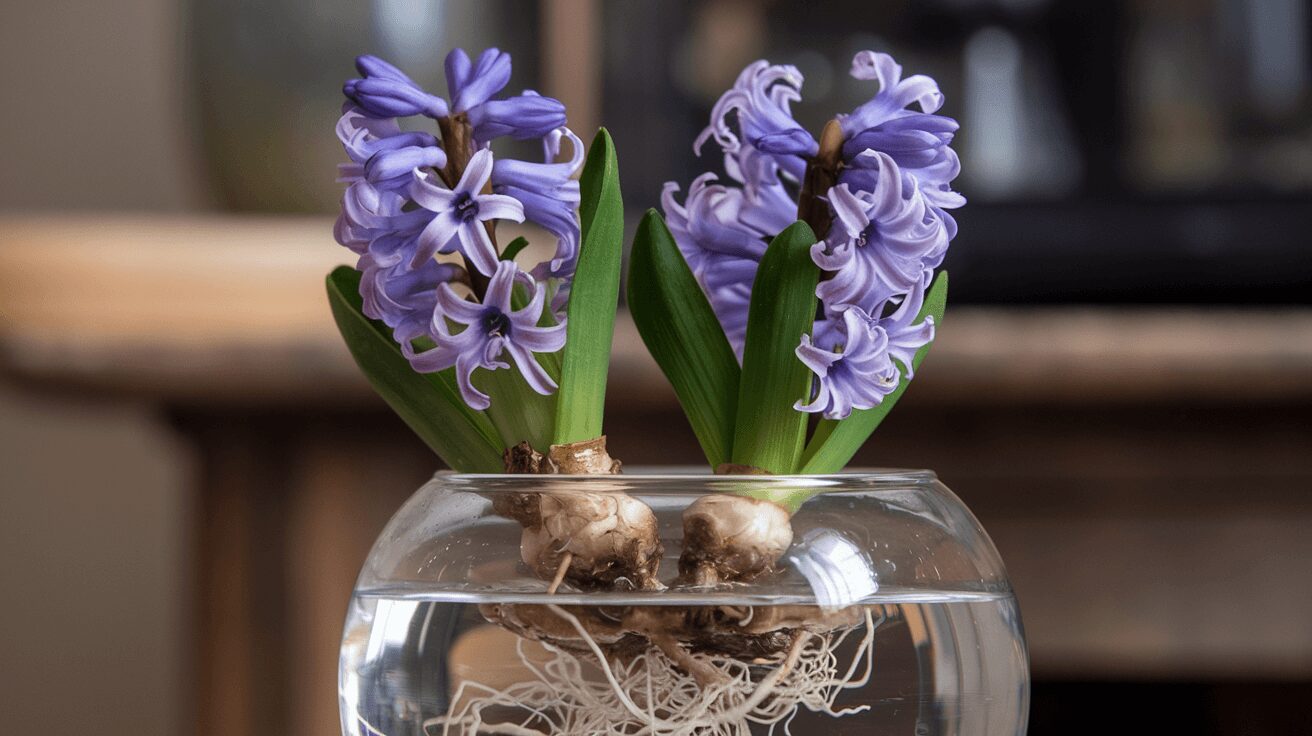
There’s something magical about growing hyacinths in water, especially when you get to watch the roots and flower emerge over time.
Plus, it makes for a beautiful indoor display during winter. I’ve done this several times, and honestly, it’s one of my favorite ways to grow hyacinths. The process is simple but satisfying. Here's the step-by-step guide:
1. Pick a Suitable Vase
You’ll need a hyacinth vase or any vase with a narrow neck that can hold the bulb above water. The vase should allow the bulb to sit above the water without submerging it.
2. Prepare the Bulb
Choose a healthy, firm bulb. If your bulb hasn’t gone through the cold dormancy phase, put it in the refrigerator for 8-12 weeks before you start. Don’t store it with apples, as they release ethylene gas, which can prevent blooming.
3. Fill the Vase with Water
Add water until it’s just below the base of the bulb. You don’t want the bulb sitting in water because that can cause it to rot, but you do want the roots to be able to reach down and grow into the water.
4. Place in a Cool, Dark Place
Put the vase in a cool, dark spot (like a basement or fridge) for 4-6 weeks. This helps mimic the winter period the bulb needs. You’ll start to see roots developing, but keep it out of direct light for now.
5. Move to Bright Light
Once the roots are well-established and the shoot starts to emerge, move the vase to a bright, sunny spot. A windowsill with indirect light works well. Now you can watch the magic happen as the flower starts to grow.
6. Change Water Regularly
To keep the water fresh and oxygenated, change it about once a week. Be careful not to let the bulb sit in the water when refilling—only the roots should touch it.
7. Enjoy the Bloom
After a few weeks in the sunlight, your hyacinth will bloom, filling your home with its sweet fragrance and bright colors. Keep enjoying it through the bloom period, and remember to discard the bulb after flowering if you don’t plan to reuse it for soil planting next year.
Related:
Common Hyacinth Problems
Hyacinths are generally pretty easygoing, but like any plant, they can run into a few issues. Let’s dive deeper into some common hyacinth problems and how to fix them.
1. Bulb Rot
Bulb rot is the most frustrating problem I’ve encountered with hyacinths. It usually happens because of overwatering or poor drainage.
To avoid it, always plant your bulbs in well-draining soil and water them sparingly. If you’re growing them in pots, make sure there’s a drainage hole at the bottom. I’ve lost a few bulbs to rot in the past, and trust me, it’s a pain.
2. Yellow Leaves
Yellow leaves are often a sign that your hyacinth is either getting too much water or too little light. If you see the leaves turning yellow, check the soil—if it’s soggy, reduce your watering schedule. If it’s dry and your plant is in a shaded spot, move it to a sunnier location.
3. Failure to Bloom
Nothing is more disappointing than planting a hyacinth, only to find that it doesn’t bloom. This can happen if the bulb didn’t get enough cold during winter or was planted too shallowly.
Always make sure your bulbs go through a cold dormancy period and are planted at the right depth—about 6-8 inches for outdoor planting.
4. Leggy Growth
Leggy growth happens when hyacinths don’t get enough light. If your plant is reaching out too much, it’s a sign that it’s searching for more sunlight. Move it to a brighter spot, and if you’re growing indoors, make sure it’s near a sunny window.
5. Pests
While hyacinths aren’t as pest-prone as some plants, they can still face invaders. The most common pests you’ll run into are aphids and bulb mites. Aphids suck the sap from the plant, weakening it and sometimes spreading diseases.
You’ll usually spot them on the undersides of leaves or flower buds, and they can cause distorted growth. The good news? They’re fairly easy to control. I usually spray them off with water or use a natural neem oil solution. You can also try insecticidal soap if the infestation is bad.
Bulb mites, on the other hand, are a bit trickier. They usually target weakened or already-damaged bulbs, and by the time you notice them, the damage might already be done.
To prevent bulb mites, make sure to plant only healthy, firm bulbs and store them in a dry, well-ventilated place when not in the ground.
6. Root Rot
Root rot is another water-related problem, much like bulb rot, but it happens at the root level. It’s often caused by waterlogged soil or poor drainage.
You’ll notice that the leaves may turn yellow or wilt even though the soil is wet. To avoid this, make sure your soil is well-draining and that you’re not overwatering your plants. In pots, you can also add a layer of pebbles at the bottom to improve drainage.
Related:
Final Thought
Hyacinths are one of those plants that make you feel like a gardening pro, even if you’re just getting started. With a little bit of care (and a few learned mistakes), these beauties will bloom year after year, adding fragrance and color to your home or garden.
So, whether you’re growing them indoors, in pots, or even in water, you now have everything you need to keep your hyacinths happy. And hey, if you’ve got any tips of your own, drop them in the comments—I’m always learning new tricks from fellow plant lovers!
External Resources: For more gardening tips on coleus care, check out The Spruce and Farmer's Almanac.
FAQ
How do you take care of a potted hyacinth?
To care for a potted hyacinth, place it in a bright spot with indirect sunlight. Water it moderately, making sure the soil stays moist but not waterlogged. After blooming, allow the foliage to die back naturally while reducing water to prepare the bulb for dormancy.
Can you leave hyacinth bulbs in pots?
Yes, you can leave hyacinth bulbs in pots, but they may need extra protection from extreme temperatures. In colder regions, consider moving the pot to a frost-free location during winter, or burying the pot in the ground to insulate the bulbs.
Do hyacinths come back every year?
Hyacinths can come back every year, but they may not bloom as vibrantly after their first year. To improve the chances of yearly blooming, you can plant the bulbs in the ground after their initial potted bloom and provide them with proper post-bloom care.
How long do hyacinths last indoors?
Hyacinth blooms typically last about 2-3 weeks indoors, depending on the care and environment. Keep them in a cool, bright location and water regularly to prolong their life.
Can hyacinths grow in water without soil?
Yes, hyacinths can grow in water using a specially designed vase where the bulb sits just above the water. The roots will grow into the water, and the plant will bloom after a few weeks of care in the right light conditions.

